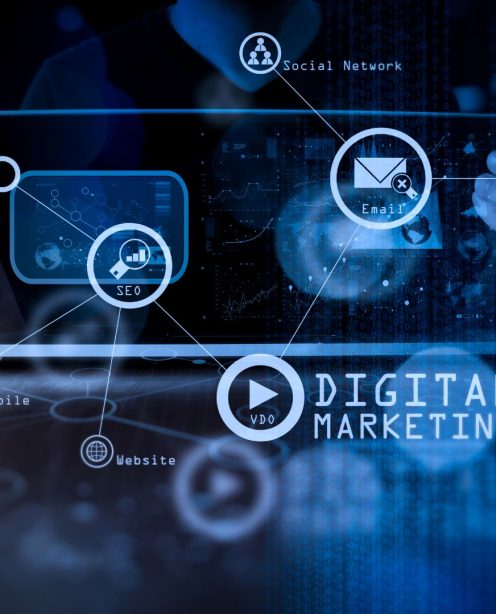Starting your digital marketing agenda on Shopify
Your digital marketing strategy will vary depending on where you are as a business (are you an established brand or just getting started), the resources you have available (and whether they are internal or external) and which Shopify plan you’re on (the lower tiers have less functionality available out of the box but the good news is that with Shopify’s vast marketplace for apps, you can always add new apps to introduce the features you need).
However, it’s always important to make sure you start with having a solid foundation and do the ‘basics’ well first, such as:
- Are you tracking performance from all your marketing channels in Google Analytics? Whilst Shopify has a pretty good reporting suite, looking at GA stats can provide additional insights to help you optimise your marketing campaigns and it’s a straight-forward process adding your GA tracking code onto your Shopify store.
- Is your Shopify store SEO-friendly and fully optimised? Check out our comprehensive SEO checklist for Shopify to ensure you’ve ticked all the boxes.
- Have you connected all your social media profiles, and your Google Ads account with Shopify? This ecommerce market leader boasts some pretty nifty straight of the box integrations with the likes of Facebook and Google, and you can easily import your product feed into Google Merchant Center to be used for Google Shopping. More recently, you can (and should) also connect your Shopify store with Facebook and Instagram to create a Facebook Shop and be able to tag all your products in Instagram posts.
- What about email marketing? Shopify has direct integrations (or apps) available for a wide variety of email marketing platforms, so make sure you connect the two to be able to bring ecommerce elements which you can use for segmentation and automation into your email marketing strategy.
Once you’ve completed all the initial set-up, checked all the integrations are working and prepared your marketing plan and the campaigns you want to run, it’s time to delve deeper into how you can maximise results from different channels.
Content Marketing
Content will play a big role when it comes to your SEO agenda to grow your Shopify store organically and keep your audience engaged and coming back for more. Having an active blog, and populating all your products are categories with readable, SEO-friendly content is key for helping your website rank higher in search engines and attract relevant traffic.
And if you’re business is more content than commerce-driven, then opting for a Headless Commerce solution where you use Shopify to power your ecommerce store, and a different framework (e.g. a CMS such as WordPress or Drupal ) for a content-rich front-end might be the best way to go. Watch out for a separate post on this, we’ll be exploring headless Shopify in more detail soon.
Email Marketing
Shopify has integrations or apps available for a wide range of email marketing platforms (such as dotdigital, Klaviyo, Omnisend and more), making it easy to connect the two and start sending transactional emails and set up automated workflows to boost your store’s online revenue.
However, if you’re only getting started being able to quickly grow your email database will be key to expanding this channel and the results it yields. With Shopify, you can easily do that – whether it’s by adding exit-intent pop-ups onto your website with a discount in exchange for signing-up to your newsletter, or by gamifying the whole experience with a ‘Spin the wheel’ approach. And there’s plenty of Shopify apps you can use for that feature.
Paid Advertising
Pay-per-click (PPC) advertising is a popular way of growing the traffic coming to a Shopify store. Whilst organic and social strategies can offer consistent growth, these often take time and patience to develop an audience, and to build authority within the online ecosystem you are working with.
The primary benefit of PPC traffic is how quickly it can be grown. If the quality of your Shopify store is high, users can be directed to your products and brands at the press of the button. Furthermore, there’s no limit on how little investment you can start with, meaning you can trial PPC ads for your Shopify store with little-to-no risk.
The most popular choices for many Shopify merchants are Google Ads and Amazon Ads. Both have an incredibly wide reach, offer tools to support and optimise your campaigns, and offer free learning materials and courses to help you understand the platforms’ utility - or if you don’t have the resource in-house to get start, you can always work with a PPC agency like ours to manage your accounts.
For Google Ads, Shopify has the powerful ability to automatically sync your products with Google Merchant Centre. While other ecommerce systems require complicated data feeds and data formatting to get started on Google Shopping Ads, Shopify does the heavy lifting for you. Simply update your catalogue in Shopify, and relax as these changes are automatically sent to Google.
For Amazon Ads, Shopify is similarly adept at making things quick and easy to manage. With Shopify’s free Amazon add-on your inventory is synced effortlessly to the world’s largest marketplace, allowing you to manage multiple sales channels in one convenient location.
Paid Social
Shopify’s developed similar quick and easy integrations with social media advertising platforms like Facebook, and with the more recent launch of Facebook Shops, you can connect your Shopify feed directly with Facebook and Instagram to create your Facebook Shop, run dynamic product ads or tag your products in your Instagram feed.
They also make easy work of adding the Facebook pixel, which we strongly recommend you set up before starting any Facebook ads to be able to accurately track performance. All you need to do is find your Facebook pixel ID and add it to your Shopify store and you’re done.
You can easily start running Paid Social campaigns on platforms like Facebook, Instagram and even Pinterest or other social networks, and invest your advertising spend into the ad formats and campaigns that will drive the biggest returns. For example, we’ve been running Paid Social ads on Facebook and Instagram for a Shopify retailer with Facebook ROAS (return on ad spend) averaging above 1000% in 2020, and even hitting over 2300% during a peak month.
Other channels and tactics
With new Shopify apps constantly emerging and well-established marketing platforms embracing this ecommerce market leader, there’s plenty of other marketing tactics and channels you can introduce in the mix, including:
- Loyalty and refer-a-friend programmes, which can strengthen both your retention and acquisition agenda, with some popular options including Swell, Loyalty Lion and Smile.io
- Collecting customer reviews and using them as trust signals across your website, with apps available from Yotpo, Reviews.io, Feefo and more.
- Investing in a Conversion Rate Optimisation (CRO) programme to improve your conversion rates sitewide.
- Adding new channels such as SMS marketing - we particularly like SMSBump from Yotpo for this.
- Delivering a personalised and enhanced user experience with the help of Nosto, Klevu and other platforms.
Time to get started
We hope this blog has been useful in terms of showcasing the variety of marketing tactics and excellent Shopify apps and features you can use to take your digital marketing performance to the next level.
We’re also aware that there’s quite a lot of information and if you’re not too familiar with some of these platforms, it may all be a bit overwhelming. If you need a helping hand with your digital marketing agenda or Shopify store, we’re one click away – just say [email protected] and we’ll be happy to have a chat with you.




